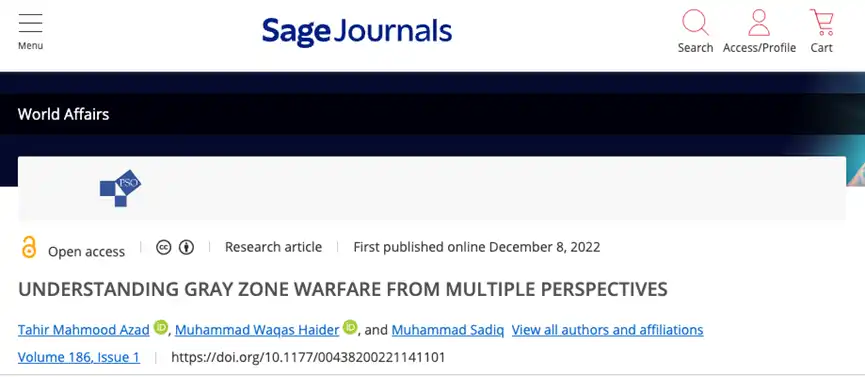Gray Zone War:Concepts, practices and coping strategies

In the 21st century, with the rapid development of science and technology, the form and characteristics of traditional warfare are undergoing profound changes. Especially in the context of informatization and globalization, non-dynamic dimensions, mixed warfare, soft power and the ambiguity of war have become increasingly key features of modern warfare. These changes not only complicate the nature of war, but also pose unprecedented challenges to the international security environment. In particular, the emergence of the concept of "gray zone warfare" is located on the verge of peace and war and involves not only military operations, but also competition in many fields such as economy, information, and politics. This form of war is characterized by the concealment and ambiguity of its methods of action, aiming to change the behavior of opponents without triggering traditional military conflicts. In recent years, with the evolution of the global geopolitical landscape, the United States, Russia, China, Iran and other countries have used grey zone wars to varying degrees to achieve their national interests under their respective strategic goals, thus making it possible to understand and respond to grey zone wars. Become a major challenge in the field of international relations and military strategy.
A recent study explored the dynamics of grey zone warfare by analyzing the conceptualization of grey zone warfare and its practice in multiple recent cases. The article pointed out that although terms such as "grey zone war","mixed war","infinite war" and "fuzzy war" have received unprecedented attention, there are still many confusion and uncertainties in the understanding of these concepts. The study further distinguishes the differences between grey zone wars and mixed wars, and proposes strategies to deal with grey zone threats. Research results show that grey zone warfare is a unique form of warfare that includes competitive interactions between state and non-state actors, characterized by the ambiguity of their actions, the opacity of participants, and the uncertainty of relevant policy and legal frameworks. In addition, the study deepened the understanding of the concept and practice of grey zone warfare by reviewing several examples of grey zone warfare in recent years, revealing its persistent confusion and ambiguity.
The term "grey zone war" was first seen in the 2010 Quadrennial Defense Review, including covert actions such as China's aggressive actions in the South China Sea and Russia's cyber attacks on Ukraine, designed to prepare for a larger aggression. This approach combines military, political and economic means to achieve strategic goals. Some researchers believe that grey zone warfare is just a repetition of terms such as mixed warfare, fifth-generation warfare, proxy warfare, unconventional warfare, and irregular warfare. The study believes that the gray area is an area that is difficult to define between war and peace. Due to the ambiguity of tactics, it lies in the middle of peace diplomacy and all-out war.
The highlight of this study is that it not only deepens the understanding of the concept of gray zone warfare, but also provides strategic recommendations on how to deal with this new form of warfare. This provides important reference value for the international community, especially military and strategic researchers. By clarifying the definition, characteristics and differences between gray zone wars and other forms of war, countries and international organizations can more effectively identify and respond to gray zone threats, thereby maintaining international peace and security.
attention to our
